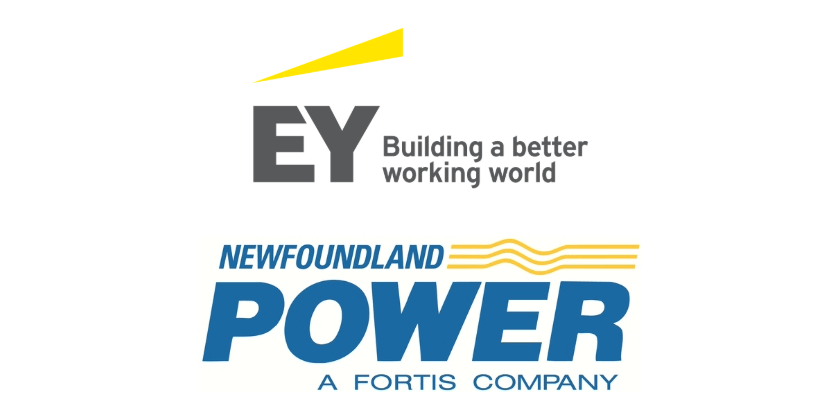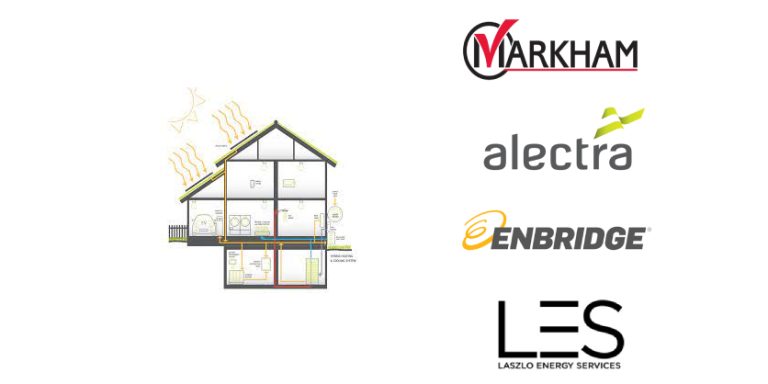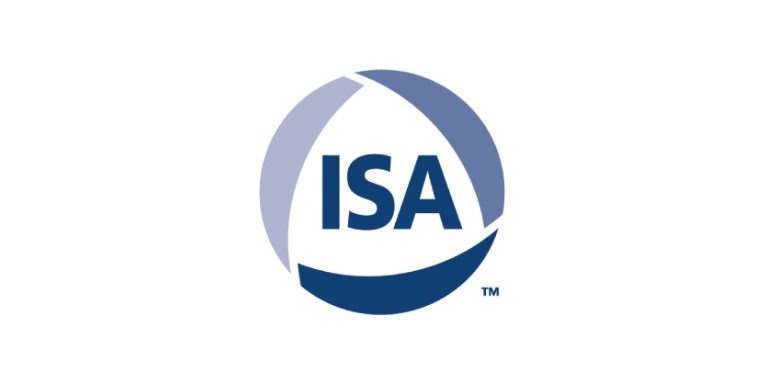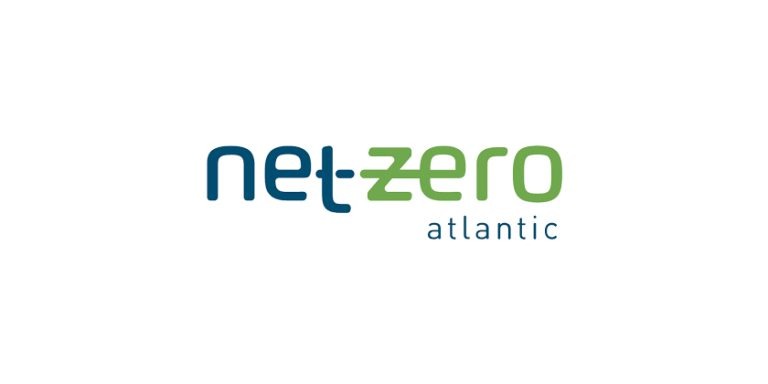A Human-Centric Approach: Newfoundland Power and EY on Implementing a New Customer Information System

January 8, 2025
By Blake Marchand
In 2023, Newfoundland Power undertook a significant project in modernizing their customer information system, taking a customer and employee centric approach. The project was recognized as part of CS Week’s 2024 Expanding Excellence Awards with the Best CIS Implementation (Level II).
The discovery phase of the project was initiated in 2018. Through a thorough process, Newfoundland Power determined their 30-year legacy system had reached the end of its viability and began working with EY on implementing a modern customer information system (CIS).
In the simplest terms, the people centric system is designed to be streamlined and efficient, minimizing pain points for employees and expediating wait times for customers, while also consolidating a customer’s information into an easy to navigate interface, and ultimately, modernizing the system for the utility’s future.
“Newfoundland Power went through a very thoughtful risk assessment process,” noted Ernst & Young’s David Steele, “and one of the things that they had arrived at is the ability to make modifications to the legacy system was becoming cost prohibitive with increased risk. It was reaching technical obsolescence, and there’s no question a new modern system would allow a lot more flexibility.”
I spoke to Wade Hiscock, Director St. John’s Region for Newfoundland Power and the CIS project director, who was involved from the project’s approval by the Public Utilities Board up until the project went live, as well as Frank Flynn, Senior Manager, Technology for Newfoundland Power, who served as the project manager and has been involved in the entire process. Wade and Frank unpacked the process, working with the EY team on the implementation, challenges, adjustments, what made the project necessary and how it improved their operations, as well as the customer experience.
The project has been live for over one year, it was launched in August 2023, after three years of pre-planning for the project.
It was initially filed as a 25-month project. Approval was delayed until April – they were expecting approval the previous December. That led them to make an adjustment to shorten the implementation time frame.
“[The delayed approval] created a challenge, whereby the 25-months would have run us into our winter season when we are most likely to have our major outages, a lot more customer billing issues in the peak billing season, and we also had our fiscal year end in December. So, making changes to the financial system in that fourth quarter requires extra compliance work,” explained Wade. Adding that their normal year-end reporting procedures would also create challenges.
“So that forced us into working with EY into… how can we shorten this project?”
“We ended up doing a 21-month implementation, 18 months of preparatory work before go-live and then a three-month post-go-live period of getting the product stabilize,” he explained.
Which ended up working well for Newfoundland Power.
Once they got into their workshops for the new CIS system, a platform update was released that they decided had enough benefit for them to make a slight pivot and go with the new version.
“Oracle [the platform provider] came out with a somewhat earlier than expected release of the 2.9 version of the product, we had contracted for 2.8 and that led us to stopping and having a discussion with EY. There were a lot of features in 2.9 that made sense for us.”
Wade noted that the interface for the 2.9 version was different enough that it would have been too disruptive to upgrade the system again once they had already gone live with the 2.8 version of the product. “An assessment was done, managed to get done quickly due to EY’s depth of having ample resources, while we were continuing on the path of the workshops that we had scheduled.”
“We made a decision that the bit of extra work that had to be done to go back and change some of the documentation and issues from the earlier workshops was worth the effort. EY helped us find a way to get caught up on the redesign work in a very efficient manner, and as a result being very happy with, mainly, the benefits of the 2.9 from the end-user interface. It was just such a better product.”
Working Relationship & Team Dynamics
One of the major takeaways that I had in interview Wade and Frank was the importance of Newfoundland Power and EY’s working relationship. The two teams integrated seamlessly, which is a testament to both organizations. Given the length of the project and its magnitude for Newfoundland Power, EY’s expertise becomes clear in their ability to adapt to challenges and changes to the implementation strategy.
“They were the ideal client,” noted Ernst & Young’s Maria Zambakkides. “Despite normal challenges with peaks and valleys, we focused on a people centric approach, building trust and credibility on both sides creating a badge-less environment.”
Once they began working together regularly, the two teams meshed seamlessly.
A key to their working relationship, Maria said, “we had mutual transparency and immediate, honest discussions when challenges arose.”
When Newfoundland Power had questions and concerns, they talked the issues through and settled upon what was going to best for the organization, their employees, and customers.
A key for Maria was that Newfoundland Power made sure their employees were dedicated to the project so that they didn’t also have to manage their regular jobs on top of the CIS implementation.
“They took the right steps early on, that made a huge difference in the success of the overall program and for their people. They ensured they had the right people, who knew their systems, critical business processes, customer base, and the organizations”
“Occasionally they had to go deal with matters from their prior roles. But they maintained focused on the current engagement,” she said.
Maria noted that, on an intensive project like this, team dynamics are extremely important. “We take a very human centric approach,” she said, “especially on large business and technology transformation because these programs can be tough and require dedicated time. This approach is critical to overcoming challenges because it fosters collaboration, trust and resilience.”
What were some of the indicators that made this investment necessary?
“Well, the biggest thing for us was ensuring that we would have – the way we framed up for our regulator – is continuity and customer service delivery,” noted Frank.
“Our old system was technically – the architecture, the hardware, the software, it was becoming technically obsolete and functionally we were no longer able to offer many of the asks from our customers using the system. So, we framed up a two-pronged approach functionally, technically the system was obsolete, so that’s what drove the vast majority of our requirements.”
“In terms of our staff, retirements and attrition that happened, we were getting down to too low of a number of those that had knowledge of the software to be able to make changes,” Wade added.
“That software language was no longer taught in any schools. It was a language that none of the current generation of technology folks really wanted to learn because the language was dying and not being used. Basically, we had modified the code so much, doing any major future extensions, such as implementation of the AMI meters and all the meter data management and work there – our old CI system would not have been able to handle that.”
What are some of the key features of the new customer information system for Newfoundland Power?
“Efficiency. That was a big gain for us. Things like training. In order for our agents to become self-sufficient, it took many, many months for them to be able to navigate, use the system, and a lot of in-depth training. We pretty well cut that in half with the new system, that was a major benefit for us,” Frank emphasized.
The legacy system they were upgrading became quite complex over time with the upgrades that had been made over the years, making it difficult to navigate for employees while on the phone with customers.
Certain employees would have a handle on how to navigate the system due to their longevity with the company, but as those employees moved on, challenges compounded.
A Complete View
“The other big feature is the 360° view of the customer, the landing screen and the customers information pop ups. In our old system, to get that same volume of information, you probably had to go to, depending on the customer, 8 to 10 screens to get that same information,” Wade explained.
He noted that getting to those extra screens required a specific code/acronym. Employees would have a spreadsheet next to them with all the codes for specific information that they would have to sort through. Which would really eat into their ability to help customers efficiently.
That is an example of how they are able to cut their training times in half with a modern CIS system, on top of streamlining the amount of time spent on each customer from a customer service standpoint.
To further illustrate that point, Wade explained a scenario where they had to bring in 14 temporary employees to replace a group of employees who were off doing training. The intention was for the temporary employees to be there while training on the new CIS was taking place, so they would still have people to answer the phones, maintain service continuity, and meet their service metrics prior to the new system going live.
They ran into a couple of situations where they had new programs and opportunities within the company that left them shorthanded.
“Immediately, on day one after going live, we started training with those new individuals and within a week we had them functional to at least do some of the basic, easier to handle calls. That never, ever would have been possible with the old system,” Wade explained.
As Wade detailed, the new CIS allows employees a more complete picture when taking a customer call. For example, if a customer calls with a specific management issue and eventually follows up on that request, that information is readily available in the customer’s portal and employees are able to immediately respond. Previously, they might have had to put the customer on hold and check with another department to get the full picture, extending the call.
On a busy day, that would back up wait times significantly.
“It’s taking away a lot of pain points from those agents and there’s less escalations to senior agents and to the supervisors,” Wade said.
“The new system has created a more streamlined, uniform way to handle various procedures, so that things are handled the same way by every employee.”
Additionally, customer accounts can now go with them as they change addresses, rather than having a new account number issued each time someone moves.
Bill Redesign
A next step for Newfoundland Power, building off of the new CIS, will be a bill redesign that can offer customers a single bill for multiple properties.
If you have a house, a basement apartment, and a cabin, for example, you will be able to opt into a single bill for all three rather than three separate bills and three separate payments.
Other Pain Points the New CIS Addresses
Efficiency, Operability
The challenge of the previous system from a customer services standpoint was that it was too complicated to find the correct information to help a customer in a timely manner. The result is longer times spent on hold while employees check with their colleagues on how to retrieve specific information. Longstanding employees could navigate the system better, but the more new employees you bring on, the more employees you have without that intuitive knowledge of a complex system, the more challenging it becomes to use on a day-to-day basis.
Wade noted that their legacy system was developed internally, meaning, “we weren’t getting the benefit of hundreds of utilities using a product, enhancing it, the vendor giving us updates. If something needed to change, it was our hands, our keyboards.”
Wade continued to explain the new CIS is “a low code, high configuration environment. So, if we need to make changes, we don’t need to rely on IT to make those changes. It’s basic configurations, very low code environment – so our business analysts that are fairly technical, they can make those changes and that’s a vast difference from where we came from.”
An easy to search manual is another key feature, which was driven by EY. When processes are updated, so is the manual. In the past, a physical manual would become outdated quickly and make it difficult to find certain things unless you knew where to look.
“It’s very much a live document and that has provided tremendous benefit to our agents, allowing them to provide quicker responses to customers and not have to go looking for help to the degree that they did with the old system,” Wade explained.
Additionally, employees were directly involved in the data conversion as part of the transition to the new system, which has given them more insight into data structures, so they are better equipped to handle data-related requests.
Evolving Demands
The CIS allows Newfoundland Power to see which customers have EV charging installed, which factors into planning. If they see an area with increased EV adoption, they can plan for that potential increase in demand.
Additionally, there’s a major review being conducted on the Newfoundland electrical grid related to the Muskrat Falls project the Crown Corporation undertook, which could lead to different rate structures. The CIS allows them to adjust to those types of changes with more convenience.
Revenue Streams
For customers who own their own transformers, they are able to streamline the management of end-of-life replacements.
Having information on who owns their own equipment also helps with operations. They know who owns what equipment when a customer has an issue with their power.








